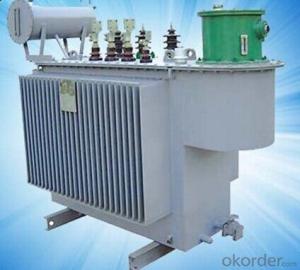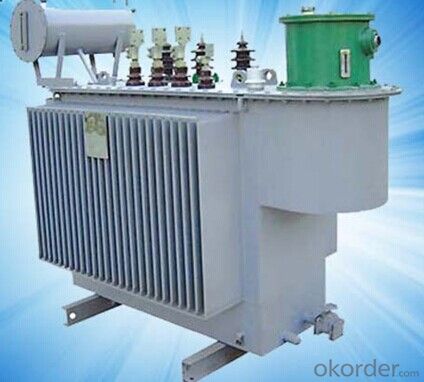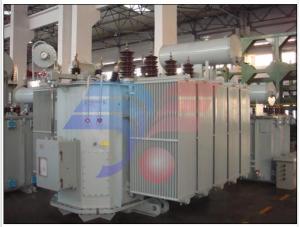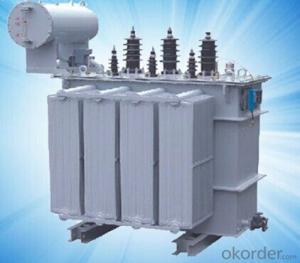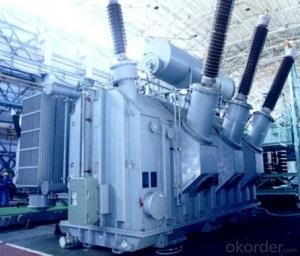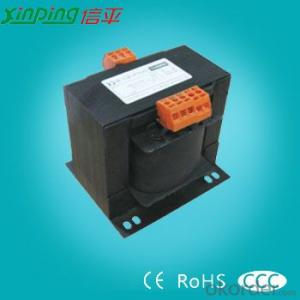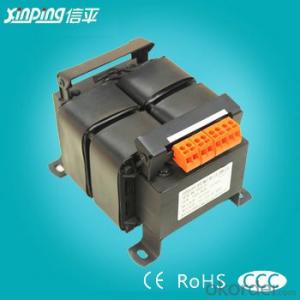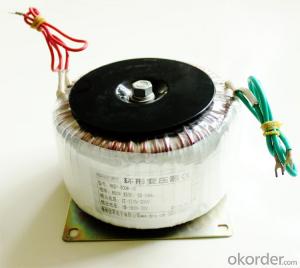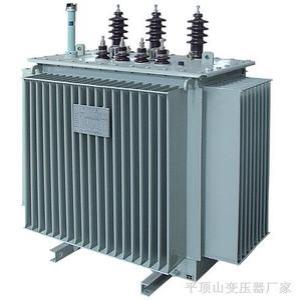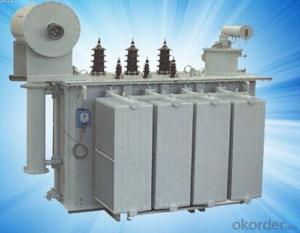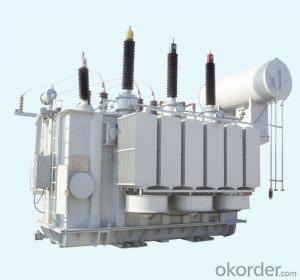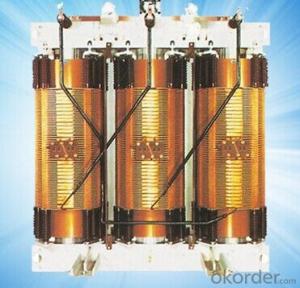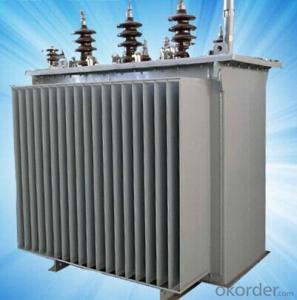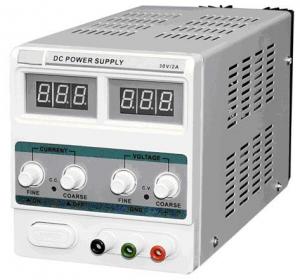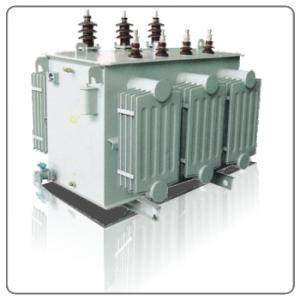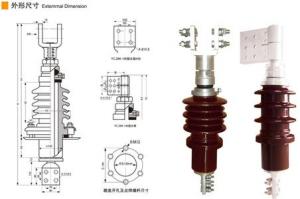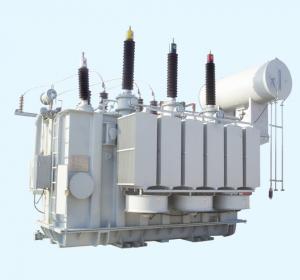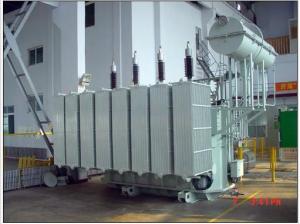SZ9-200~2500/11KV Three Phase On-load Pressure Regulating Power Transformer
OKorder Service Pledge
OKorder Financial Service
You Might Also Like
SZ9-200~2500/11KV three phase on-load pressure regulating power transformer is suitable for distribution saatem with 10KV,50HZ for industrial and mine enterprise ,power illumination .it confirms to GB1094<power transformer> standard.
SZ9-200~2500/11KV three phase on-load pressure regulating power transformer.can ajust automatically volatage underload condition according to electric grid voltage fluctuation to improve power supply quality,its performance parameter reaches international advanced level of 90s similar product,it has strongpoint of advanced workmanship,novel design.nice appearance and less groung demand.
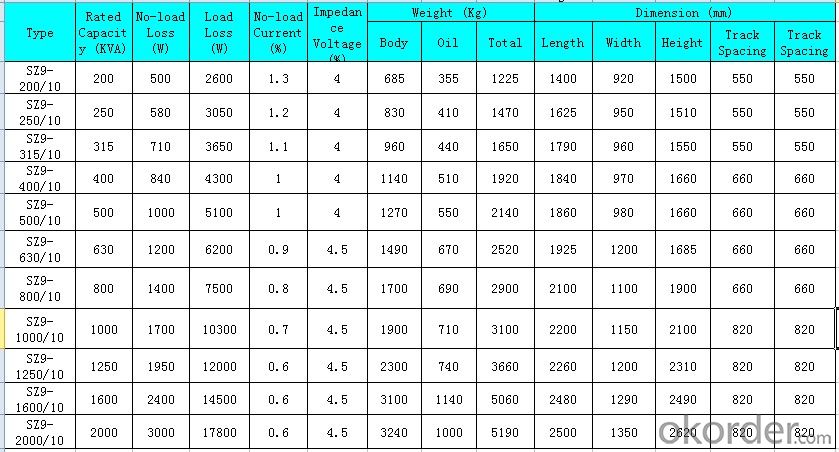
- Q: How do transformers work detailed descriptions please. Also how are the voltages stepped up or down?
- Transformers can e used only for A.C the fluctuating current in the primary coil produces a magmetic field.this magnetic field by mutual induction makes a current in secondary coil The no:of turns in primary and secon determines thr rating of transformers more the no:of turns more magnetic field will be produced in primary and less the no:of turns in the secon lesser will be the current induced and vice versa For more details visit
- Q: A transformer is a two coil component that uses electromagnetic induction to pass an AC signal from its input to its output.?How and why are transformers used on electric wires? What would be their purpose??Why do we hear that these transformers break at times?
- D size batteries are not strong enough. It would be so much easier to go buy a solar powered electric fence charger , it does'nt cost anything to run.
- Q: As we switch off an appliance at home, the power supply is cut off.when we switch it on , the power is on.How does the transformer regulate /manage as per our requirement
- go ask Optimus Prime
- Q: I just finish watching Transformers Revenge of the Fallen for the third time. IT was awesome I 'm getting it on DVD and hoping for it to come out as another transformers.
- i think no coz of the fight between megan and the director of thr movie he said he is tired of her already and is not planning to do the next one , unless somebody else direct it
- Q: 110kv level, the capacity of about 43MVA transformer models and detailed parameters
- Now 110kV transformer capacity is generally 50MVA. Models are generally SZ9, SZ10.
- Q: 1. If the input voltage is 100V and output voltage is 200V, which side of the transformer winding will be primary?(a) 100V side (c) winding with loss turns(b) 200V side (d) winding with more turns2. Which of the following statement about humming of transformer is true?(a) The frequency of humming tone is 100Hz(b) The frequency of humming tone is 50 Hz(c) The humming is caused by a vibration of the low voltage winding through which the high current flows(d) The humming is caused by the private force of attraction between the lamination of the core3. In a 10 KVA, 230/1000V 1-? transformer, the no load current will be around(a) 3 A(c) 10 A(b) 0.5 A (d) 0.9 A
- Each turn produces about the same voltage, and the primary is the input side. 1. The input voltage is lower than the output voltage, so the input winding (primary) must have the lower number of turns. 2. If the line frequency is 50 Hz, then a and d, since the vibration force is proportional to the magnitude of the current, but not the direction, so both half cycles produce the same force and there are two cycles of force each voltage cycle. The main vibration forces involve the magnetic attraction between the laminations and their magneto-striction (change in dimension as magnetic flux magnitude varies) 3. The load full load primary current will be roughly the power divided by the voltage or 10,000/23043 A. The no load current will be a few percent of that current, but I do not know the typical fraction for a transformer of that size. My seat-of-the-pants guess is a, about 7%. -- Regards, John Popelish
- Q: Transformer Uk = 4.5% What does it mean?
- Transformer short-circuit impedance, that is, his own impedance. The impedance is large, the transformer needs to resist the short circuit current multiplier is small, relatively speaking, anti-short circuit capability, but the transformer's external characteristics (volt-ampere characteristics) soft (with the transformer output current increases, the output voltage - transformer Voltage drop is very powerful). On the contrary, short-circuit impedance is small, the transformer needs to resist the short-circuit current multiplier, requiring a strong anti-short circuit transformer capacity. Of course, the external characteristics of the transformer better. Another short-circuit impedance will also affect the transformer manufacturing costs. He is not the bigger the better, nor the smaller the better. To be considered, so there are strict rules in the national standard.
- Q: i wann no wat type (kind, year, color) each transformer is, plz add the transformers name (i'd like them from BOTH the 1st and 2nd movie) plz and thank u!!!
- I'm sure Wikipedia has the answer.
- Q: I read comments on youtube saying avatar cg looks like computer games.I liked avatar cg. transformers cg looks more real but I don't think movies always have to look more real.
- Avatar is really a wonderful epic movie. I love the CG cause they made the characters look more like the real actors, the place looks like an amazing paradise, and the story really touches my heart seriously although I know it's fiction. Plus the battle at the end is awesome, it's like when you watch Star Wars because you get to see these incredible creatures fighting machines and the human race
- Q: What is the critical load of the economic operation of the transformer?
- In order to increase the amount of active loss caused by the active loss of the system in the power system, a conversion factor is introduced, that is, the reactive power economic equivalent. Reactive power economic equivalent, is that the power system to send 1kvar reactive power, the power system will increase the number of active power loss kw, the symbol kq, unit kw / kvar. This kq value and the power system capacity, structure and calculation of the specific location and other factors. For the factory substation, reactive power economic equivalent kq = 0.02 ~ 0.15; Kq = 0.05 ~ 0.08; for the three or more transformer factory, take kq = 0.1 ~ 0.15 ~ 0.04; for the two-stage transformer factory, take kq = The
Send your message to us
SZ9-200~2500/11KV Three Phase On-load Pressure Regulating Power Transformer
OKorder Service Pledge
OKorder Financial Service
Similar products
Hot products
Hot Searches
Related keywords
